10 Simple Tips to Read Cat Food Labels Correctly
If reading cat food labels makes your head spin, you’re far from alone. Between the fancy buzzwords, confusing ingredient lists, and tiny font sizes, figuring out what’s actually in your kitty’s dinner feels like cracking a secret code. But here’s the deal: learning how to read cat food labels is one of the easiest ways to make smarter, healthier choices for your feline friend. That means fewer additives, more real nutrition, and hopefully, less side-eye from your cat at mealtime.
This guide breaks it all down into ten simple, practical tips. We’ll show you what to look for, what to ignore, and how to spot marketing fluff from actual nutrition facts. Whether you’re navigating meat by-products, nutrient percentages, or mysterious “meal” ingredients, you’ll finish this article with confidence—and maybe a bit of label-reading swagger.
So grab a can from the shelf, flip it over, and let’s decode what your cat’s really eating.
1. Start with the Ingredient List

Before you pick any wet food for cats, peek at the ingredient list first. It’s not just a block of text—it’s a goldmine of info about what your cat is actually eating.
Here’s why it matters: Ingredients are listed by weight. So, if the first few items are real meat (like chicken or turkey), you’re on the right track. But if you see fillers or by-products leading the list? Maybe skip it.
This makes it perfect for pet parents craving transparency. You’ll know exactly what’s in that can—no guesswork.
While the label looks intimidating, learning how to read cat food labels can help you choose the right dinner every time. Tip: meat first, odd stuff last.
Whether you’re feeding your kitten or a senior cat, understanding the ingredient order gives your furry friend the nutrition they deserve.
2. Identify the Protein Source

Animal protein is a non-negotiable for your carnivorous companion. When you read cat food labels, start by scanning for a clear, named protein.
Look for specific sources like “chicken,” “beef,” or “salmon.” These indicate better-quality ingredients versus ambiguous terms like “animal meal” or “meat by-products.”
Why does it matter? Vague labels could mean lower-grade or inconsistent protein sources, which may impact your cat’s health long-term.
If you’re aiming for species-appropriate nutrition—think wet food for cats full of real meat—this tip is game-changing. It applies across the board: whether you shop premium or budget, this rule remains gold.
Even the fanciest cat food (wet or dry) can lead you astray if the protein source isn’t clear. So, read smart. Your cat’s muscles (and attitude) depend on it.
3. Check the Guaranteed Analysis

If you want to read cat food labels accurately, start with the Guaranteed Analysis. This section isn’t just small print—it’s gold. It spells out the percentages of protein, fat, fiber, and moisture in your cat’s meal. Wet cat food often looks juicy, but the nutrient density matters more than the gravy. Quick tip: adult cats typically thrive on 30%+ protein, so aim for that baseline. Comparing different types of wet food for cats? Start here. This info helps you tell if a product is truly premium or just cleverly packaged. Don’t skip it—it’s like the nutrition facts panel for your cat’s dinner!
4. Understand the AAFCO Statement
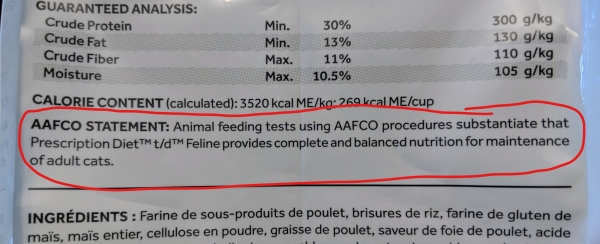
If there’s one spot your eyes should land on when you read cat food labels, it’s the AAFCO statement. This little block of text can speak volumes about what’s in the bowl.
The Association of American Feed Control Officials (AAFCO) doesn’t actually approve pet food, but it does lay down the standards manufacturers aim to meet. Look for the phrase “complete and balanced” tailored to your cat’s life stage. That means the product meets essential nutritional standards. No vague promises, just real requirements.
It’s especially important when feeding wet food for cats, as nutritional adequacy isn’t always a given. So whether you’re eyeing a premium can or a store-brand packet, this quick check saves you from guesswork.
In short? Let that AAFCO claim do the heavy lifting. Because your cat deserves better than mystery meat.
5. Find the Life Stage Designation
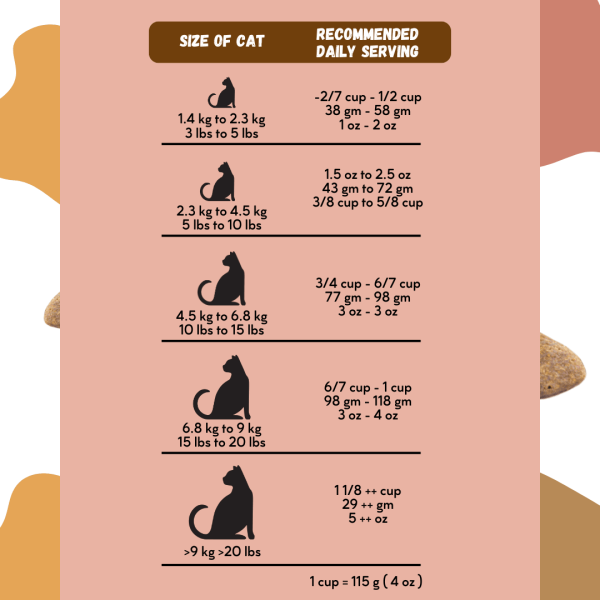
One quick way to make sure you’re feeding your cat properly? Find the life stage designation on the label. Makes a huge difference—especially if your kitten is eating food meant for seniors (yikes).
When you read cat food labels, always look for terms like “for growth”, “maintenance”, or “all life stages.” These aren’t just words—they’re actually regulated by AAFCO and tell you if the food’s nutritionally balanced for your cat’s age.
It matters because kittens need energy-packed formulas, while seniors usually need something gentler on aging organs. Wet cat food and dry options both come labeled accordingly, so don’t skip this part.
This little check helps whether you’re feeding wet food for cats or kibble. Age-appropriate nutrition isn’t bonus—it’s essential. Let’s not have anyone aging prematurely over poor diet.
6. Interpret Feeding Guidelines
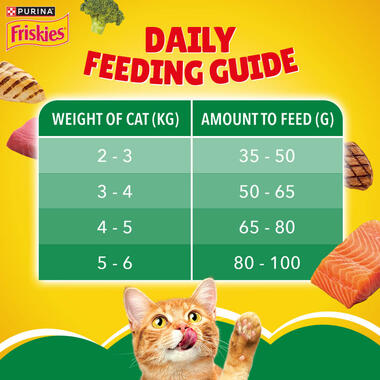
If you’re trying to avoid a Garfield situation at home, this tip is critical. When you read cat food labels, don’t just skim the feeding chart—actually study it. Although it’s a general guideline, it’s a solid place to start. Your cat’s weight, metabolism, and activity level all factor in. A lazy lap cat might need less than a zoomie-prone kitten. Use the chart, but tweak portions accordingly. Ideal for owners battling weight gain—or the opposite—in their pets. When serving wet cat food or dry bits, keep portions balanced. Remember, overfeeding happens fast with calorie-rich wet food for cats. Check the brand’s recommendations and monitor your furry friend’s shape, not just the bowl.
7. Spot Unnecessary Fillers and Additives

When you read cat food labels, always pause at the ingredient list. If the first few items scream “corn,” “soy,” or “artificial flavors,” it’s a red flag.
Many inexpensive wet food for cats sneak in these bulk fillers to stretch the formula. But your feline’s tummy? It won’t thank you for that.
Fillers and chemical preservatives can cause digestive hiccups or even trigger allergies in sensitive cats. Look instead for limited, wholesome ingredients—real meat or fish, and clear vitamin sources.
Avoid buzzwords like “meat by-product” or “color added.” Because unless your cat’s planning a dinner party, bright red kibble is truly unnecessary.
Richer quality means a healthier cat and fewer vet visits. So yes, that extra minute scanning for natural ingredients is absolutely worth it.
8. Look for Manufacturer Details
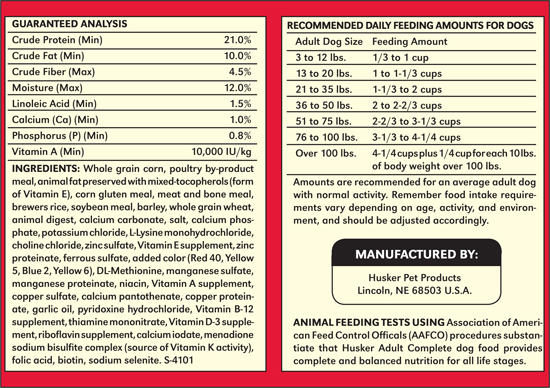
When trying to read cat food labels, don’t skip the tiny print that tells you who made it. Sure, it’s not the most glamorous part—but it’s definitely one of the most important.
Brands that openly include their company name, contact info, and manufacturing location are showing they’re transparent. That’s accountability you and your cat deserve, especially with wet food for cats where freshness matters.
If a food label lists a vague distributor with no clear contact? That’s a red flag. Reputable cat food (wet or dry) companies are proud of their sourcing and production facilities. And many include U.S.-based addresses and phone numbers for customer support.
Bottom line: if they’re not telling you where or how the food is made, what else are they hiding?
9. Learn Common Label Terms
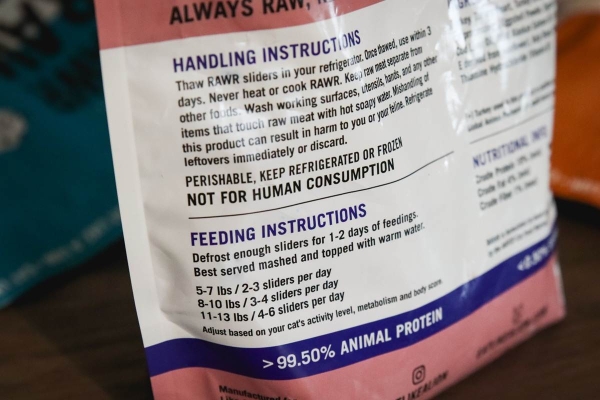
Trying to read cat food labels can feel like translating ancient scripts—especially when every can screams “premium,” “natural,” or “veterinarian-approved.” But wait, does “natural” even mean anything? Spoiler: not always.
Many food terms are loosely regulated, which means brands can print buzzwords that sound ideal but mean very little. “Grain-free” doesn’t equal healthier. “Premium” isn’t a guarantee of quality. And “organic”? Well, check for actual certification.
This tip is best for pet parents who want to confidently decode wet cat food packaging without being misled by clever marketing. Knowing a few key terms helps you make better choices without falling for fluff.
Honestly, once you learn what’s bluster and what’s backed by science, choosing the right wet food for cats feels way less stressful—and a lot more empowering.
10. Consider Moisture and Food Type
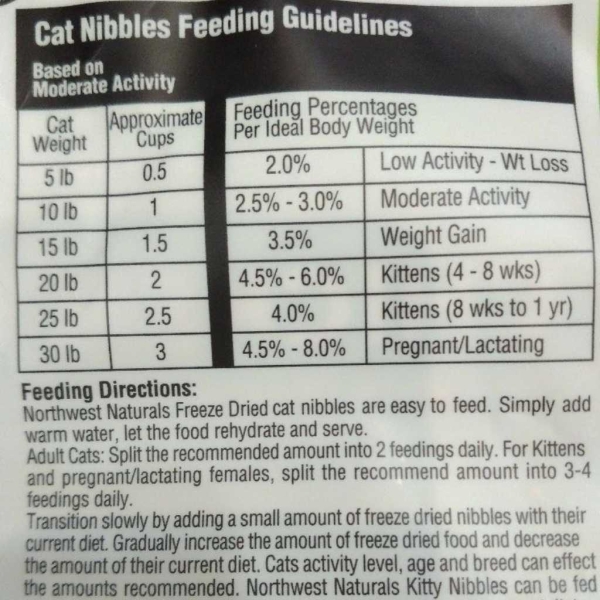
Don’t just skim—slow down and compare like with like. Moisture content can be misleading unless you’re comparing the same food types. Wet cat food typically contains around 75-85% moisture, while dry food? Maybe 10%. That difference matters.
For instance, a wet food for cats might look low in calories but pack plenty of moisture—keeping your kitty hydrated while delivering fewer calories per bite. On the flip side, dry food is calorie-dense, great for grazers or cats needing to gain weight.
Always check the label to see whether it’s wet, semi-moist, or dry. Then, compare nutritional content accordingly. Understanding this helps ensure your cat thrives—whether you’re picking pate or kibble. One more reason why it’s essential to read cat food labels carefully.
For more info, Cornell’s Feline Health Center has a detailed breakdown of food types and hydration here.
Wet Cat Food FAQs
How to read cat wet food labels?
Cat food labels can be confusing—seriously, it’s like decoding a new language. Start by scanning the ingredient list. The first few items matter most because they make up the bulk of the food. Stick with clearly labeled proteins like “chicken” or “salmon” and steer clear of those mystery terms like “meat by-products.” Next, check the guaranteed analysis. This shows protein, fat, fiber, and moisture percentages. More moisture is normal in wet food, but you still want a high-quality protein. Also, see if the packaging says “complete and balanced.” That means it meets AAFCO’s standards—translation: your cat’s not missing out on anything important. Finally, steer clear of artificial colors and fillers. Your cat doesn’t need dyes to enjoy dinner.
Is feeding your cat two cans of wet food per day really sufficient?
Sometimes, yes. But not always. A lot depends on the size of the cans and the size of your cat. An average adult cat needs between 200–250 calories a day. If each can is around 100–125 calories, two cans might be just right. On the other hand, if your cat is a couch potato or a feline fitness champ, you’ll need to adjust. Always read the feeding guidelines and match it with your cat’s weight, lifestyle, and health. Hard truth? Overfeeding leads to chonky kitties—and that’s not cute when it affects their health. When in doubt, ask your vet.
What’s the difference between +1 and +7 cat food?
The +1 and +7 labels? Those are all about age. Think of them like age-specific menus. +1 cat food is formulated for adult cats—typically from 1 to 6 years old. It focuses on maintaining energy, lean muscle, and digestive health. However, +7 is for senior kitties. This formula usually has fewer calories, added antioxidants, and ingredients to support joints, kidneys, and aging organs. Cats don’t age gracefully without help—so switching to the right formula at the right time can make a big difference. Bottom line? Feed for their age, not just their appetite.
How many packets of wet food should a cat have a day?
Let’s break it down. Most wet food pouches are around 70–85 grams and contain 75–100 calories. For a typical 10-pound indoor cat, that translates to about 2.5 to 3 pouches per day. Yes, your math is right—it adds up fast. To make this less of a guessing game, check the feeding instructions on the packaging. Still unsure? Use body condition as your guide. Is your cat starting to wobble instead of walk? Might be time to adjust. No shame in over-loving your cat with food—but balancing it is key to long-term health.
Make Sense of Cat Food Labels with Confidence
We hope these tips helped you read cat food labels more clearly and make smarter choices for your feline friend. Understanding ingredient lists, guaranteed analyses, and nutritional adequacy statements isn’t always straightforward—but now, you’ve got the tools.
From figuring out what “by-products” really mean to spotting red flags like vague ingredient terms, reading a cat food label no longer needs to feel like deciphering ancient code. Whether you’re navigating protein sources or parsing feeding guidelines, staying informed means a healthier, happier cat.
Still unsure? That’s okay—resources like AAFCO guidelines and veterinary-backed advice (think VCA or Banfield) are always there to back you up. And remember, every cat is different. What works for your friend’s chunky tabby might not be right for your sprightly senior.
So next time you’re scanning the pet food aisle, you’ll know how to spot quality from marketing fluff. Because when you read cat food labels properly, you’re not just buying food—you’re investing in your cat’s well-being.
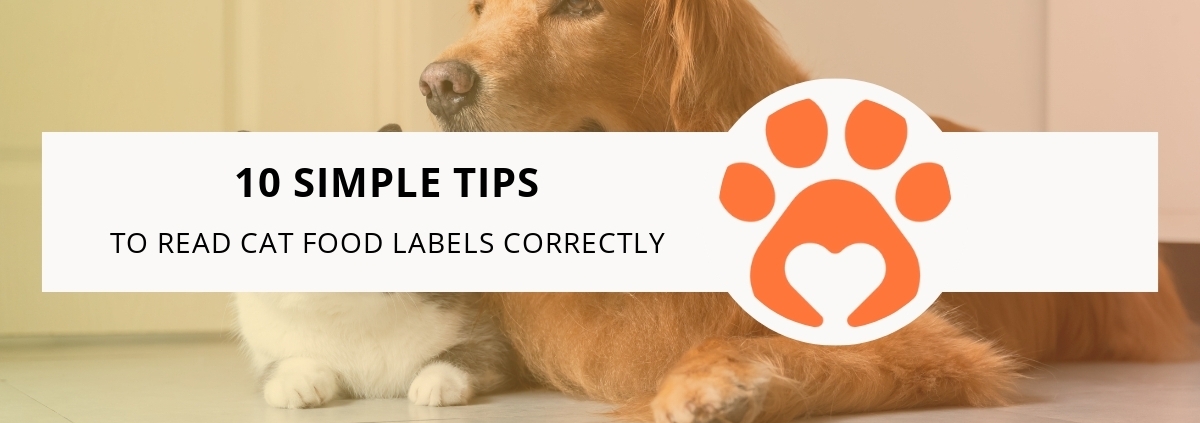
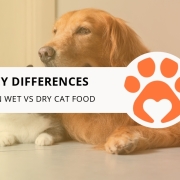


Leave a Reply
Want to join the discussion?Feel free to contribute!